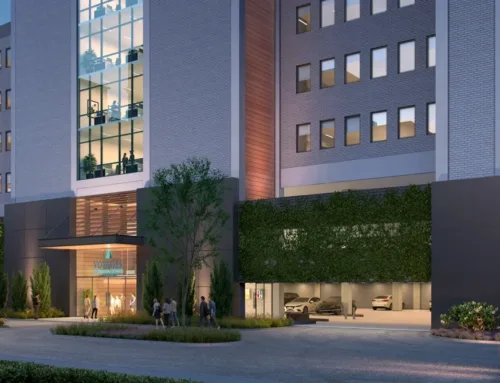Two things came out of last night’s meeting between Whole Foods officials and the Lakewood Neighborhood Association. First, the company still isn’t sure when the store will open, but when it does, it will be spiffy -– a LEED-certified building that will include a barbecue stand, an expanded produce section, on-premise bread baking, and cheese made in-house.
And the second? The recent unpleasantness, when Whole Foods decided not tear down the Minyard’s and build a new store because of what it called onerous zoning restrictions and neighborhood objections, has been mostly forgotten. No one brought it up, and Seth Stutzman, Whole Foods’ southwest regional vice president, went out of his way to reassure everyone that the company loves the neighborhood. "We had great communications with the city and our neighbors, and we decided to take our core values into account," he told a standing room only audience of more than 100 people at the Times Ten Cellars annex on Kidwell.

Core values, in this case, means rehabbing the Minyard’s, which is a more environmentally friendly process than tearing it down. And, as Whole Foods likes to point out, it’s an environmentally friendly company. The announcement that the new store would be LEED-certified was met with a round of applause, which wasn’t surprising. One of the sticking points between Whole Foods and some in the neighborhood was that the new store wouldn’t be LEED certified. Stutzman said the company didn’t know what level of certification the remodeled store would get, since remodeling is still underway and LEED certification is a complicated process.
Which is also why the company isn’t quite sure when the new store will open. Remodeling revealed what Stutzman called "foundation issues." "We’re going to fix them and do it the right way," he said, but that means the store might not open by the end of February, which was the last, best guess. But Stutzman did guarantee an opening sometime in the first half of 2009, which elicited much good-natured laughter from the audience.
"I’ve worked on the all the new stores in this area, including Park Lane, and this is the most exciting project I’ve worked on," he said. "We’re making so many big stores, and it’s tough to make them feel like part of the community. But that’s what we’ve been able to do with this one."
Among the remodeled store’s other details:
• The entrance will move more towards Gaston, though much of the parking lot will remain the same. It will have a Lakewood and Texas theme, with old photos, designs and the like. It will be extensively landscaped with native plants.
• The store will be one story. Stutzman said it would too difficult to get LEED certification to build a second story on the existing structure.
• Other environmental touches include 48 skylights, energy efficient lighting and dairy and freezer cases. Some trees will have to be removed, but Whole Foods is working with the Lakewood Neighborhood Association to find places to plant them elsewhere. The company has already sold some of the brick from the rehab to a Florida company, which has re-sold it for another construction project.
• Hours will be 8 a.m.-10 p.m. daily, and the coffee bar will probably open at 7 a.m.
• The store will be about 40,000 square feet, about twice as big as the Greenville Avenue location. The company has not yet decided on what it will do with the Greenville site, but is looking at several options, which Stutzman didn’t want to discuss.
• Whole Foods is working with the city to improve security, which had been a problem in Minyard’s last days. Stutzman said the company is familiar with the situation, and wanted to prevent any recurrence of those problems.
• The company will build a Lakewood-style welcome column and install it at the bottom of the property, on the point where Abrams meets Gaston. It’s doing this, said Scott Simons, the Whole Foods marketing official for this area, to honor the neighborhood and reflect the store’s roots.
Stutzman spoke for about 10 or 15 minutes, and then he and Simons took questions for another 15 or 20 minutes. Most were intelligent and direct, focusing on the building’s green aspects, parking and security, and the store’s features. Only one question really touched on the new vs. remodeled issue: What did the neighborhood lose by not building a new store?
"I don’t know if you really lost anything," Stutzman said, citing a wine bar and the second story that were in the original plans but won’t be built now. No one in the audience seemed to disagree with him.





